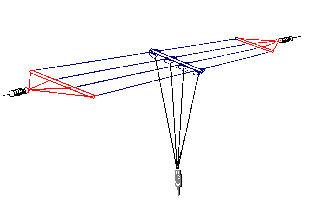 QRP kits search on eBay
QRP kits search on eBay
See http://www.ebay.co.uk/sch/i.html?_nkw=qrp+kit .
Occasionally I look on eBay to see what is on offer. Searching for “QRP kits” throws up quite an interesting selection of stuff, much of it only available by eBay and not otherwise advertised. Some of these items are good bargains.
Touch wood, I have never yet had a bad experience on eBay when buying or selling. Mind you, I would be very careful and not spend too much. Some dealers are good (the vast majority) but there are always a few “bad eggs”.
Caveat emptor.
Roger Lapthorn, G3XBM, is a regular contributor to AmateurRadio.com and writes from Cambridge, England.
 630m Crossband Activity Night Reminder
630m Crossband Activity Night Reminder
Just a reminder about the 630m Activity Night coming up at the end of this month. You may recall the details in an earlier blog. I think the most exciting thing about this evening will be the opportunity to try to make a crossband CW contact between one or more of the three participating Canadian stations, hopefully covering both ends of the country:
- VO1NA - Joe, in Torbay, Newfoundland. Joe will transmit on 477.7 kHz starting at 2130Z Oct 31 and will continue until 0130Z Nov 1. He will listen for callers on 3562 kHz and 7062 kHz.
- VE7BDQ - John, in Delta, B.C. John will transmit on 474.0 kHz starting at 0100Z and will continue until 1000Z on Nov 1. He will listen for callers on 3536 kHz.
- VE7SL - Steve, on Mayne Island, B.C. I will transmit on 473.0 kHz starting at 0200Z and will continue until 0600Z on Nov 1. I will listen for callers on 3566 kHz and 7066 kHz.
Joe should have pretty good coverage of the east coast with his fine antenna system, shown above.
Please note that, at present, the 'crossband activity' is planned for Friday evening only since Saturday night's CW Sweepstakes Contest will make HF listening more difficult.
All stations will either call CQ or run “VVV” marker beacons while listening on their respective HF receive (QSX) frequencies, which will be included in the CQ or marker beacon message.
Also know that it is completely legal for U.S. and VE amateurs to contact Canadian amateurs via the crossband mode. Unfortunately, it is not possible to contact those stations that may be operating in the Experimental Service and not using an amateur radio callsign.
For additional information, please see the ARRL's description of the event.
Remember that you don't need a fancy antenna to listen on 630m. One of your HF antennas, fed as a 'longwire', will probably do the job....even better if you can tune it to resonance.
I will blog another reminder just before the event. We all hope that you can be there!
Steve McDonald, VE7SL, is a regular contributor to AmateurRadio.com and writes from British Columbia, Canada. Contact him at [email protected].
 Stocking up!
Stocking up!
Infact the price was so good, I ordered 5000 they arrived here in less than a week direct from China.
http://www.banggood.com/Wholesale-New-Best-selling-2500-PCS-50-Values-1-Or-4W-0_25W-1-Pencent-Metal-Film-Resistor-Kit-p-40424.html
Steve, G1KQH, is a regular contributor to AmateurRadio.com and writes from England. Contact him at [email protected].
 Building the Kenwood TS-990s HF/6m radio
Building the Kenwood TS-990s HF/6m radio
Steve, G1KQH, is a regular contributor to AmateurRadio.com and writes from England. Contact him at [email protected].
 146-147MHz to full UK radio amateurs soon
146-147MHz to full UK radio amateurs soon
Today, OFCOM announced that 146-147MHz will be temporarily released to full UK licencees from Oct 31st this year, by NoV. Personally, I would have preferred other parts of the spectrum to have been released instead as 2m is never that busy, at least it is very quiet usually around here. If you plan to operate 146-147MHz in the UK you will need to get an NoV via the RSGB. Note that this is temporary.
I wrote to OFCOM suggesting officially allowing UK amateurs access legally to sub 8.3kHz, re-releasing the 73kHz band and a new allocation around 40MHz (ideal for Es experiments). In OFCOM’s release they say I asked for a new band at 400MHz. I did not.
Roger Lapthorn, G3XBM, is a regular contributor to AmateurRadio.com and writes from Cambridge, England.
 VE7BPO Homebuilder Web Files
VE7BPO Homebuilder Web Files
The recent closure of Todd's valuable site has resulted in the entire data from there now being mirrored at two locations in .pdf format. It's all there, complete with all the schematics and photographs from the original site ...and is very easily searched. The file is about 40Mb and consists of 945 pages!
- Jason, NT7S has posted the file here.
- Steve, VK2JA has posted the file here.
If you missed it earlier, Todd's new blog is slowly starting to take shape and by the looks of it will soon be running full-speed ahead.
Steve McDonald, VE7SL, is a regular contributor to AmateurRadio.com and writes from British Columbia, Canada. Contact him at [email protected].
 AmateurLogic 9th Anniversary live stream
AmateurLogic 9th Anniversary live stream
Join us for the shooting of our 9th Anniversary live on Sunday, October 12th at 7PM CDT, 000 UTC on www.live.amateurlogic.tv

George Thomas, W5JDX, is co-host of AmateurLogic.TV, an original amateur radio video program hosted by George Thomas (W5JDX), Tommy Martin (N5ZNO), Peter Berrett (VK3PB), and Emile Diodene (KE5QKR). Contact him at [email protected].
















